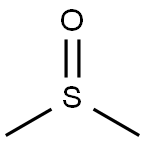2,4-Dimethylpyrrole
- CAS NO.:625-82-1
- Empirical Formula: C6H9N
- Molecular Weight: 95.14
- MDL number: MFCD00192088
- EINECS: 210-912-2
- SAFETY DATA SHEET (SDS)
- Update Date: 2025-07-14 15:27:00

What is 2,4-Dimethylpyrrole?
Chemical properties
clear light yellow to light yellow-orange liquid
The Uses of 2,4-Dimethylpyrrole
2,4-Dimethylpyrrole is a substituted pyrrole. Its synthesis by using ethyl acetoacetate as starting material has been reported. Its basicity has been evaluated from UV spectral data.Its photodecomposition on irradiation has been reported to afford H2, CH4, C2H6 and polymeric products.

2,4-Dimethylpyrrole may be used in the synthesis of the following:
2,5-bis(2′,4′-dimethyl-5′-pyrryl)p-benzoquinone.
boron dipyrromethene (BODIPY) dyes.
2,4-dimethyl-6-methoxyprodigiosene.
The Uses of 2,4-Dimethylpyrrole
2,4-Dimethylpyrrole may be used in the synthesis of the following:
- 2,5-bis(2′,4′-dimethyl-5′-pyrryl)p-benzoquinone
- boron dipyrromethene (BODIPY) dyes
- 2,4-dimethyl-6-methoxyprodigiosene
Synthesis Reference(s)
Synthesis, p. 1585, 2000 DOI: 10.1055/s-2000-7618
General Description
2,4-Dimethylpyrrole is a substituted pyrrole. Its synthesis by using ethyl acetoacetate as starting material has been reported. Its basicity has been evaluated from UV spectral data. Its photodecomposition on irradiation has been reported to afford H2, CH4, C2H6 and polymeric products.
Synthesis
420 g (2.0 mol) of 2,4-dimethyl-3,5-bismethoxycarbonylpyrrole were suspended in 1200 g of 20% strength sodium hydroxide solution, and the mixture was heated. The solid gradually passed into solution during this process. At 92° C. gas had started to evolve vigorously; some of the dicarboxylic acid was decarboxylated in the process. The methanol formed during the hydrolysis was distilled off continuously until essentially only water was passing over. The mixture which remained was then neutralized with 250 g of 50% strength sulfuric acid (pH about 7.5) and heated to boiling at the reflux condenser with water separator. The 2,4-dimethylpyrrole separated out as a yellow upper phase over the course of a few hours. The aqueous phase was continuously recycled into the boiling mixture. A total of 152.5 g of organic phase was obtained. This comprised 8.1% of water, the remainder consisted of 99.1% of 2,4-dimethylpyrrole, determined as area percentages by gas chromatography using a flame ionization detector. This corresponded to 138.9 g of 2,4-dimethylpyrrole (73% of theory).
Properties of 2,4-Dimethylpyrrole
| Melting point: | 6.5°C (estimate) |
| Boiling point: | 165-167 °C (lit.) |
| Density | 0.924 g/mL at 25 °C (lit.) |
| refractive index | n |
| Flash point: | >230 °F |
| storage temp. | Keep in dark place,Inert atmosphere,2-8°C |
| solubility | Chloroform (Slightly), Methanol (Slightly) |
| form | Crystalline Powder |
| pka | 18.03±0.50(Predicted) |
| color | Orange-red to maroon, brown or violet |
| Stability: | Light Sensitive |
| CAS DataBase Reference | 625-82-1(CAS DataBase Reference) |
| NIST Chemistry Reference | 1H-Pyrrole, 2,4-dimethyl-(625-82-1) |
Safety information for 2,4-Dimethylpyrrole
| Signal word | Warning |
| Pictogram(s) |
 Exclamation Mark Irritant GHS07 |
| GHS Hazard Statements |
H315:Skin corrosion/irritation H319:Serious eye damage/eye irritation H335:Specific target organ toxicity, single exposure;Respiratory tract irritation |
| Precautionary Statement Codes |
P261:Avoid breathing dust/fume/gas/mist/vapours/spray. P264:Wash hands thoroughly after handling. P264:Wash skin thouroughly after handling. P271:Use only outdoors or in a well-ventilated area. P280:Wear protective gloves/protective clothing/eye protection/face protection. P302+P352:IF ON SKIN: wash with plenty of soap and water. P305+P351+P338:IF IN EYES: Rinse cautiously with water for several minutes. Remove contact lenses, if present and easy to do. Continuerinsing. |
Computed Descriptors for 2,4-Dimethylpyrrole
| InChIKey | MFFMQGGZCLEMCI-UHFFFAOYSA-N |
2,4-Dimethylpyrrole manufacturer
JSK Chemicals
ASM Organics
New Products
4,4-Difluoropiperidine hydrochloride tert-butyl 9-methoxy-3-azaspiro[5.5]undecane-3-carboxylate Indole Methyl Resin N-Isopropylurea N,N-Dicyclohexylcarbodiimide(DCC) MELDRUMS ACID 5-METHYLISOXAZOLE-4-CARBOXYLIC ACID Magnessium Bis glycinate Zinc ascorbate 1-bromo-2-butyne 2-acetamidophenol 9(10H)-anthracenone Erythrosin B, 4-Piperidinopiperidine 2-((4-morpholinophenylamino) (methylthio) methylene) malononitrile 2,4-dihydroxybenzaldehyde 3-(4-morpholinophenylamino)-5-amino-1H-pyrazole-4-carbonitrile Methyl 2-methylquinoline-6-carboxylate 2,6-dichloro-4-nitropyridine 4-Bromo-2-chlorobenzonitrile 2-(benzylamino)acetic acid hydrochloride 4-(tert-Butoxycarbonylamino)but- 2-ynoic acid 3,4-dihydro-2H-benzo[b][1,4]dioxepine 1-Phenyl-1-cycloprppanecarboxylicacidRelated products of tetrahydrofuran








You may like
-
 625-82-1 2,4-DIMETHYLPYRROLE 99%View Details
625-82-1 2,4-DIMETHYLPYRROLE 99%View Details
625-82-1 -
 2,4-Dimethyl-1H-pyrrole 98%View Details
2,4-Dimethyl-1H-pyrrole 98%View Details
625-82-1 -
 625-82-1 2,4-Dimethylpyrrole, 96% 99%View Details
625-82-1 2,4-Dimethylpyrrole, 96% 99%View Details
625-82-1 -
 2,4-Dimethylpyrrole CAS 625-82-1View Details
2,4-Dimethylpyrrole CAS 625-82-1View Details
625-82-1 -
 2,4-Dimethylpyrrole CAS 625-82-1View Details
2,4-Dimethylpyrrole CAS 625-82-1View Details
625-82-1 -
 2,4-Dimethylpyrrole CAS 625-82-1View Details
2,4-Dimethylpyrrole CAS 625-82-1View Details
625-82-1 -
 2,4-Dimethylpyrrole CAS 625-82-1View Details
2,4-Dimethylpyrrole CAS 625-82-1View Details
625-82-1 -
 20677-73-0 (2,2-diethoxyethyl)methylamine 98%View Details
20677-73-0 (2,2-diethoxyethyl)methylamine 98%View Details
20677-73-0
